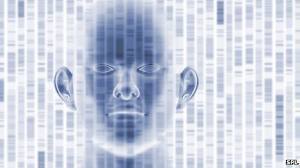Using cryptography, scientists have invented a new technique to decrypt eukaryotic genomes
See on Scoop.it – Virology and Bioinformatics from Virology.ca
The main function of gene promoters appears to be the integration of different gene products in their biological pathways in order to maintain homeostasis. Generally, promoters have been classified in two major classes, namely TATA and CpG. Nevertheless, many genes using the same combinatorial formation of transcription factors have different gene expression patterns. Accordingly, a group of scientists has now tried to find some fundamental questions: Why certain genes have an overall predisposition for higher gene expression levels than others? What causes such a predisposition? Is there a structural relationship of these sequences in different tissues? Is there a strong phylogenetic relationship between promoters of closely related species?
In order to gain valuable insights into different promoter regions, they obtained a series of image-based patterns allowing the identificaion of 10 generic classes of promoters. A comprehensive analysis was undertaken for promoter sequences from Arabidopsis thaliana, Drosophila melanogaster, Homo sapiensand Oryza sativa, and a more extensive analysis of tissue-specific promoters in humans. The scientists observed a clear preference for these species to use certain classes of promoters for specific biological processes. Moreover, in humans, they found that different tissues use distinct classes of promoters, reflecting an emerging promoter network. Depending on the tissue type, comparisons made between these classes of promoters reveal a complementarity between their patterns whereas some other classes of promoters have been observed to occur in competition. Furthermore, they also noticed the existence of some transitional states between these classes of promoters that may explain certain evolutionary mechanisms, which suggest a possible predisposition for specific levels of gene expression and perhaps for a different number of factors responsible for triggering gene expression. They conclusions from all this are based on comprehensive data from three different databases and a new computer model whose core is using Kappa index of coincidence.
See on www.ncbi.nlm.nih.gov
